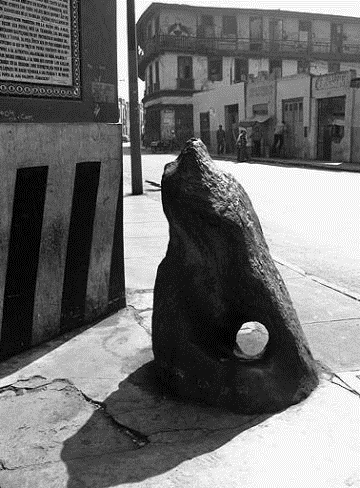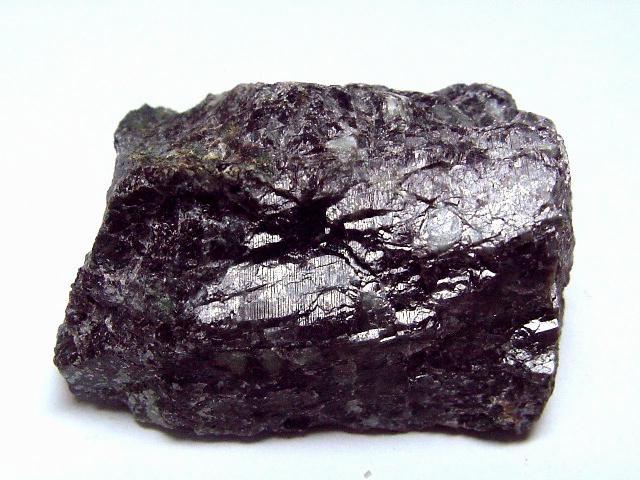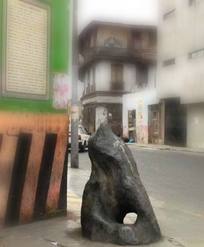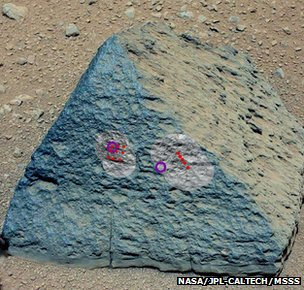It looks like you're using an Ad Blocker.
Please white-list or disable AboveTopSecret.com in your ad-blocking tool.
Thank you.
Some features of ATS will be disabled while you continue to use an ad-blocker.
The Mystery of The "Piedra Horadada" (PERU) - From Saints and Demons to Astronomical Observatory
page: 1share:

I was about 7 years old the first time I heard about this stone. Not frequently, mystical and magic stories offer physical evidence to assist in the search of its origins. Before we talk about this stone, you might want to watch this small video in order to have a better perspective of it.
“Peña horadada” can be translated like “perforated stone”. A legend says that back in times of the colonies, the “demon” was walking by the streets of Lima but he got trapped between the religious people carrying saints in their parade. This “Diablo” melted the rock to pass thru and escape from the faith of the people.
The story is well known by locals, also mentioned by the writer Ricardo Palma in his book “Tradiciones Peruanas”.
But hundreds of years later, we count with enough knowledge to analyze this story and I do believe ATSers will like it.
The origin of the stone remains unknown and nobody knows how it appeared in this place. According to the Geophysical Society of Peru, the stone dates back to pre-Hispanic times, and could have been transported from the Chillon Valley in the Andean foothills, by river, and the inhabitants of the valley, placed in a suitable place to worship in pre-Inca times.
The rock is made of quartz and feldspar and has tens of thousands of years. Now we have a clue.
Feldspars (KAlSi3O8 – NaAlSi3O8 – CaAl2Si2O8) are a group of rock-forming tectosilicate minerals that make up as much as 60% of the Earth's crust.[2]
Between the types of feldspar is the "andesine".

Andesine is a silicate mineral, a member of the plagioclase feldspar solid solution series. Its chemical formula is (Ca, Na)(Al, Si)4O8, where Ca/(Ca + Na) (% Anorthite) is between 30%-50%. The formula may be written as Na0.7-0.5Ca0.3-0.5Al1.3-1.5Si2.7-2.5O8.[1]
Andesine occurs in intermediate igneous rocks such as diorite, syenite and andesite. It characteristically occurs in metamorphic rocks of granulite to amphibolite facies commonly exhibiting antiperthite texture. It also occurs as detrital grains in sedimentary rocks. It is commonly associated with quartz, potassium feldspar, biotite, hornblende and magnetite.
With that information we can rule out meteorites this time. Also, there are not volcanos in Lima. The rock was transported there in ancient times. But how?

Through the years, there have been many attempts to remove the stone from its place because it blocks the way of pedestrians. It's been impossible, not even using machinery.
This made me think the rock is bigger than they think, and a great part of it is underground. I wonder how the rest of it looks like.
Even if we discard the meteorite theory, I must mention that the same material had been found by NASA in Mars.

The pyramidal object, nicknamed "Jake Matijevic" after a recently deceased mission engineer, had a composition not seen on the planet before.
Scientists have likened it to some unusual but well known rocks on Earth.
Jake Matijevic was found to be high in elements consistent with the mineral feldspar, such as sodium and potassium, and low in elements such as magnesium and iron.
Recently, Carlota Pereyra King, scientific from the San Marcos University (Lima), said she deciphered the stone and concluded that it is an astronomical solstice observatory or marker used by ancient Peruvians to determinate the change of the seasons.
Her initial observations were simple, but brilliant:
In Peña Horadada it can be distinguished the solstices and equinoxes. The summer solstice sunlight reflecting the hole is large and can be seen mostly between 7 and 9 am, then gets smaller until it disappeared around June. The scientist explains that for Peruvian cultures it was important to know the rainy season because it meant water was synonymous with fertility.
Now we reached the point were the same old questions need to be repeated one more time. Besides the fact we don't know how the rock was transported there, we must ask what technology was used to make the hole in the rock and how was it placed with mathematical exactitude in order to acomplish its astronomical functions. All that, without the resources we have today. We not even know what pre-columbian culture made it.
For that reason, I consider this case stiil unsolved.
tejiendoelmundo.wordpress.com...
en.wikipedia.org...
en.wikipedia.org...
www.fotominer.com...
www.bbc.co.uk...
www.diariolaprimeraperu.com...
edit on 21-12-2013 by Trueman
because: (no reason given)
reply to post by Trueman
But with all of the evidence suggesting that at some point in the past we did have the technology and the resources to do what we find today ...You do know that there are still people living in caves despite others living in houses . On one hand we say they could not have done it while on the other hand we see they did .. Time to think one way and stop wrestling with two opposing truths ...peace
But with all of the evidence suggesting that at some point in the past we did have the technology and the resources to do what we find today ...You do know that there are still people living in caves despite others living in houses . On one hand we say they could not have done it while on the other hand we see they did .. Time to think one way and stop wrestling with two opposing truths ...peace
reply to post by the2ofusr1
Define "we".
But with all of the evidence suggesting that at some point in the past we did have the technology and the resources to do what we find today
Define "we".
reply to post by Trueman
Oh I don't know ...I would look around on this planet and see if there are any other beings that build similar structures to what we are uncovering underground .As well as the structures we find abandoned in the jungles ..
Oh I don't know ...I would look around on this planet and see if there are any other beings that build similar structures to what we are uncovering underground .As well as the structures we find abandoned in the jungles ..
the2ofusr1
reply to post by Trueman
Oh I don't know ...I would look around on this planet and see if there are any other beings that build similar structures to what we are uncovering underground .As well as the structures we find abandoned in the jungles ..
Not sure if we are the same breed.
Trueman
Through the years, there have been many attempts to remove the stone from its place because it blocks the way of pedestrians. It's been impossible, not even using machinery.
This is the kind of stupid stuff that makes people shake their head. It's not impossible. It's very easy. Anyone telling you they want to remove it and it's impossible is lying. We certainly have tools that can break through quartz.
The OP also states "there are no volcanos in Lima," as if that means the stone couldn't be local.
Believe me, there is certainly feldspar in the ground around Lima.
Secondly, the OP's quote shows this type forms in andesite. Lima is thick with andesite.
Harte
Believe me, there is certainly feldspar in the ground around Lima.
Secondly, the OP's quote shows this type forms in andesite. Lima is thick with andesite.
Harte
Harte
The OP also states "there are no volcanos in Lima," as if that means the stone couldn't be local.
Believe me, there is certainly feldspar in the ground around Lima.
Secondly, the OP's quote shows this type forms in andesite. Lima is thick with andesite.
Harte
Good to see you Harte !
Yeah, it seems to be a contradiction here. Feldspar can be found in Lima but this area of Lima in particular is far from the Andes. From there, it takes less time to find the ocean than the Andes (just to give you an idea).
With that said, we must consider ancient unrecorded volcanic activity in the area. That is a good reference for the age of the stone.
The hole and the rock doesn't need to have the same age, unless we consider the hole in the rock a natural formation.
In that case, we could speculate ancient people were attracted by its shape and removed it from the original location. That would bring to us the question about the transpotation of the rock.
For me, it results very interesting the fact that the rock and the hole on it, are telling us 2 different stores. One is about the geological origins of the continent and the other is about ancient astronomy.
edit on 22-12-2013 by Trueman because: (no reason given)
reply to post by OccamsRazor04
Before you call it stupid, did you considered that the rock is bigger and a big part of it can be underground?
As you can see, it's in the middle of the sidewalk, right next to houses. The cost of destroying and rebuilding the cosntructions around the rock only because is uncomfortable for walking people may not justify the extraction of the rock.
Cutting te stone is unthinkable for me, unless you are the last spaniard conquistador without respect for other cultures. It is an ancient astronomical observatory, like the Intiwatana.
Before you call it stupid, did you considered that the rock is bigger and a big part of it can be underground?
As you can see, it's in the middle of the sidewalk, right next to houses. The cost of destroying and rebuilding the cosntructions around the rock only because is uncomfortable for walking people may not justify the extraction of the rock.
Cutting te stone is unthinkable for me, unless you are the last spaniard conquistador without respect for other cultures. It is an ancient astronomical observatory, like the Intiwatana.
edit on 22-12-2013 by Trueman because: (no reason given)
Andesite is named that because of the Andes.
Trueman
Harte
The OP also states "there are no volcanos in Lima," as if that means the stone couldn't be local.
Believe me, there is certainly feldspar in the ground around Lima.
Secondly, the OP's quote shows this type forms in andesite. Lima is thick with andesite.
Harte
Good to see you Harte !
Yeah, it seems to be a contradiction here. Feldspar can be found in Lima but this area of Lima in particular is far from the Andes. From there, it takes less time to find the ocean than the Andes (just to give you an idea).
With that said, we must consider ancient unrecorded volcanic activity in the area. That is a good reference for the age of the stone.
The hole and the rock doesn't need to have the same age, unless we consider the hole in the rock a natural formation.
In that case, we could speculate ancient people were attracted by its shape and removed it from the original location. That would bring to us the question about the transpotation of the rock.
Lima is downhill from there.
The stone appears to have been deposited in a river for some time, judging solely by the smoothness of the wear on it. An inclusion in the stone can cause a hole just like that, given enough time, if there is a current. I first heard about this mechanism reading Robert Schoch's analysis of Yonaguni and the holes found in the stone there.
The igneous rock in the Andes (and downhill from there) is millions of years old.
Harte
Trueman
reply to post by OccamsRazor04
Before you call it stupid, did you considered that the rock is bigger and a big part of it can be underground?
As you can see, it's in the middle of the sidewalk, right next to houses. The cost of destroying and rebuilding the cosntructions around the rock only because is uncomfortable for walking people may not justify the extraction of the rock.
Cutting te stone is unthinkable for me, unless you are the last spaniard conquistador without respect for other cultures. It is an ancient astronomical observatory, like the Intiwatana.edit on 22-12-2013 by Trueman because: (no reason given)
It can be the size of a mountain underground, they can still break off the to part. To suggest they want to get rid of the top part that is a nuisance and it's impossible is pure fantasy.
reply to post by Harte
Lima is downhill from there.
The stone appears to have been deposited in a river for some time, judging solely by the smoothness of the wear on it. An inclusion in the stone can cause a hole just like that, given enough time, if there is a current. I first heard about this mechanism reading Robert Schoch's analysis of Yonaguni and the holes found in the stone there.
The igneous rock in the Andes (and downhill from there) is millions of years old.
I wouldn't consider Lima downhill from the Andes. There are more than one Lima. Lima City, Lima Province and Lima Department (State).
The stone is in Lima City, travelling from that location to the Andes would take about 2-3 hours, going thru Chosica, which is considered the start of the highlands.
This is absolutely wonderful OP.
Just a little bit of the ancient world refusing to let modernity impose complete dominance on the peoples.
Enjoyed it.
-FBB
Just a little bit of the ancient world refusing to let modernity impose complete dominance on the peoples.
Enjoyed it.
-FBB
Trueman
reply to post by Harte
I wouldn't consider Lima downhill from the Andes. There are more than one Lima. Lima City, Lima Province and Lima Department (State).
The stone is in Lima City, travelling from that location to the Andes would take about 2-3 hours, going thru Chosica, which is considered the start of the highlands.
I get what you're saying, but the geology of Lima is that it is built on alluvial fans of debris washed down from the Andes, the most recent being the stone resulting from Cretaceous vulcanism - diorite. source
I don't mean to imply that there is diorite jutting out of the occasional sidewalk section around Lima! LOL
Harte
Harte
Trueman
reply to post by Harte
I wouldn't consider Lima downhill from the Andes. There are more than one Lima. Lima City, Lima Province and Lima Department (State).
The stone is in Lima City, travelling from that location to the Andes would take about 2-3 hours, going thru Chosica, which is considered the start of the highlands.
I get what you're saying, but the geology of Lima is that it is built on alluvial fans of debris washed down from the Andes, the most recent being the stone resulting from Cretaceous vulcanism - diorite. source
I don't mean to imply that there is diorite jutting out of the occasional sidewalk section around Lima! LOL
Harte
I'm glad you cleared that my friend, a responsable reply from you as usual.
Trueman
…
Recently, Carlota Pereyra King, scientific from the San Marcos University (Lima), said she deciphered the stone and concluded that it is an astronomical solstice observatory or marker used by ancient Peruvians to determinate the change of the seasons.
… “…The scientist explains that for Peruvian cultures it was important to know the rainy season because it meant water was synonymous with fertility.”
…
Thanks for the tale Trueman!
I am apparently not as impressed as you with Scientist King’s decipherication…or…explanation.
“Peruvian cultures” – denotes that the people have been living there for probably…generations…
If their livelihood &/or survival were dependent on the rainy season (&/or knowing which HALF of the year they were in)…and they were so out of tune with what had been going on for the last months-weeks-days…that they needed to go find the ‘stone’ to figure it out – I have a little trouble believing that such a culture would have survived long enough to even be considered “a culture”.
Maybe she’s correct… Just doesn’t work very well for me.
Again, though – thanks for the mysterious tale!
WanDash
Trueman
…
Recently, Carlota Pereyra King, scientific from the San Marcos University (Lima), said she deciphered the stone and concluded that it is an astronomical solstice observatory or marker used by ancient Peruvians to determinate the change of the seasons.
… “…The scientist explains that for Peruvian cultures it was important to know the rainy season because it meant water was synonymous with fertility.”
…
Thanks for the tale Trueman!
I am apparently not as impressed as you with Scientist King’s decipherication…or…explanation.
“Peruvian cultures” – denotes that the people have been living there for probably…generations…
If their livelihood &/or survival were dependent on the rainy season (&/or knowing which HALF of the year they were in)…and they were so out of tune with what had been going on for the last months-weeks-days…that they needed to go find the ‘stone’ to figure it out – I have a little trouble believing that such a culture would have survived long enough to even be considered “a culture”.
Maybe she’s correct… Just doesn’t work very well for me.
Again, though – thanks for the mysterious tale!
Well, it seems the best explanation we have for now, astronomical observation was one of the cornerstones of the agricultural development in pre-columbians and Inca's cultures. Certainly, this is not the first time I offer information to support that concept.
This Thread shows how ancient andean people used the Pleiades for weather monitoring.
Here is also another thread about weather control for agricultural purposes.
The problem with "Piedra Horadada" is the lack of information about the people that used it. I strongly believe the answer is underground. Today is a whole neighbourhood around the stone, which makes it virtually impossible any archaeological excavation, unless the construction of a new building takes place. It happened before, as you can read here too.
edit on 24-12-2013
by Trueman because: (no reason given)
reply to post by WanDash
so are you saying the hole does not align with the sun at the start of the rainy season or whatever she said?
I don't think they depended on it to survive as you seem to be insinuating. It just said it was important to them. Watching the super bowl is important to some, and though they may believe their survival depends on it, it doesn't If I misunderstood something here, I apologize. Another example would be Stonehenge. Cultures existed before it. It was important to them to calculate solstices and stuff, but by no means was their very existence as a culture dependant on it. Maybe a part of their culture since certain holidays and rituals revolved around it. Again if I'm totally off base here I am sorry bud.
so are you saying the hole does not align with the sun at the start of the rainy season or whatever she said?
I don't think they depended on it to survive as you seem to be insinuating. It just said it was important to them. Watching the super bowl is important to some, and though they may believe their survival depends on it, it doesn't If I misunderstood something here, I apologize. Another example would be Stonehenge. Cultures existed before it. It was important to them to calculate solstices and stuff, but by no means was their very existence as a culture dependant on it. Maybe a part of their culture since certain holidays and rituals revolved around it. Again if I'm totally off base here I am sorry bud.
edit on 12/24/2013 by 3n19m470 because: (no reason given)
new topics
-
Who's coming with me?
General Conspiracies: 12 minutes ago -
FBI Director CHRISTOPHER WRAY Will Resign Before President Trump Takes Office on 1.20.2025.
US Political Madness: 3 hours ago -
The NIH is still sending taxpayer money to Chinese Labs to Conduct cruel animal experiments
Mainstream News: 4 hours ago -
Angela Merkel is terrified of dogs
Politicians & People: 5 hours ago -
Will all hell break out? Jersey drones - blue beam
Aliens and UFOs: 11 hours ago
top topics
-
The NIH is still sending taxpayer money to Chinese Labs to Conduct cruel animal experiments
Mainstream News: 4 hours ago, 11 flags -
FBI Director CHRISTOPHER WRAY Will Resign Before President Trump Takes Office on 1.20.2025.
US Political Madness: 3 hours ago, 7 flags -
Should be BANNED!
General Chit Chat: 14 hours ago, 6 flags -
Will all hell break out? Jersey drones - blue beam
Aliens and UFOs: 11 hours ago, 4 flags -
Angela Merkel is terrified of dogs
Politicians & People: 5 hours ago, 2 flags -
Who's coming with me?
General Conspiracies: 12 minutes ago, 0 flags
active topics
-
Who's coming with me?
General Conspiracies • 4 • : AlroyFarms -
-@TH3WH17ERABB17- -Q- ---TIME TO SHOW THE WORLD--- -Part- --44--
Dissecting Disinformation • 3613 • : Thoughtful3 -
Salvatore Pais confirms science in MH370 videos are real during live stream
General Conspiracies • 237 • : b0kal0ka -
And Here Come the Excuses!!
General Conspiracies • 131 • : DBCowboy -
Will all hell break out? Jersey drones - blue beam
Aliens and UFOs • 35 • : Xtrozero -
Angela Merkel is terrified of dogs
Politicians & People • 4 • : andy06shake -
Petition Calling for General Election at 564,016 and rising Fast
Political Issues • 158 • : Oldcarpy2 -
Drones over New Jersey
Aliens and UFOs • 39 • : ratcals -
Drones everywhere in New Jersey
Aliens and UFOs • 55 • : MetalThunder -
ILLUMINATION – Reverse Perception Of Cyclic Probability – CEO ASSASSINATION
Secret Societies • 20 • : KnowItAllKnowNothin

